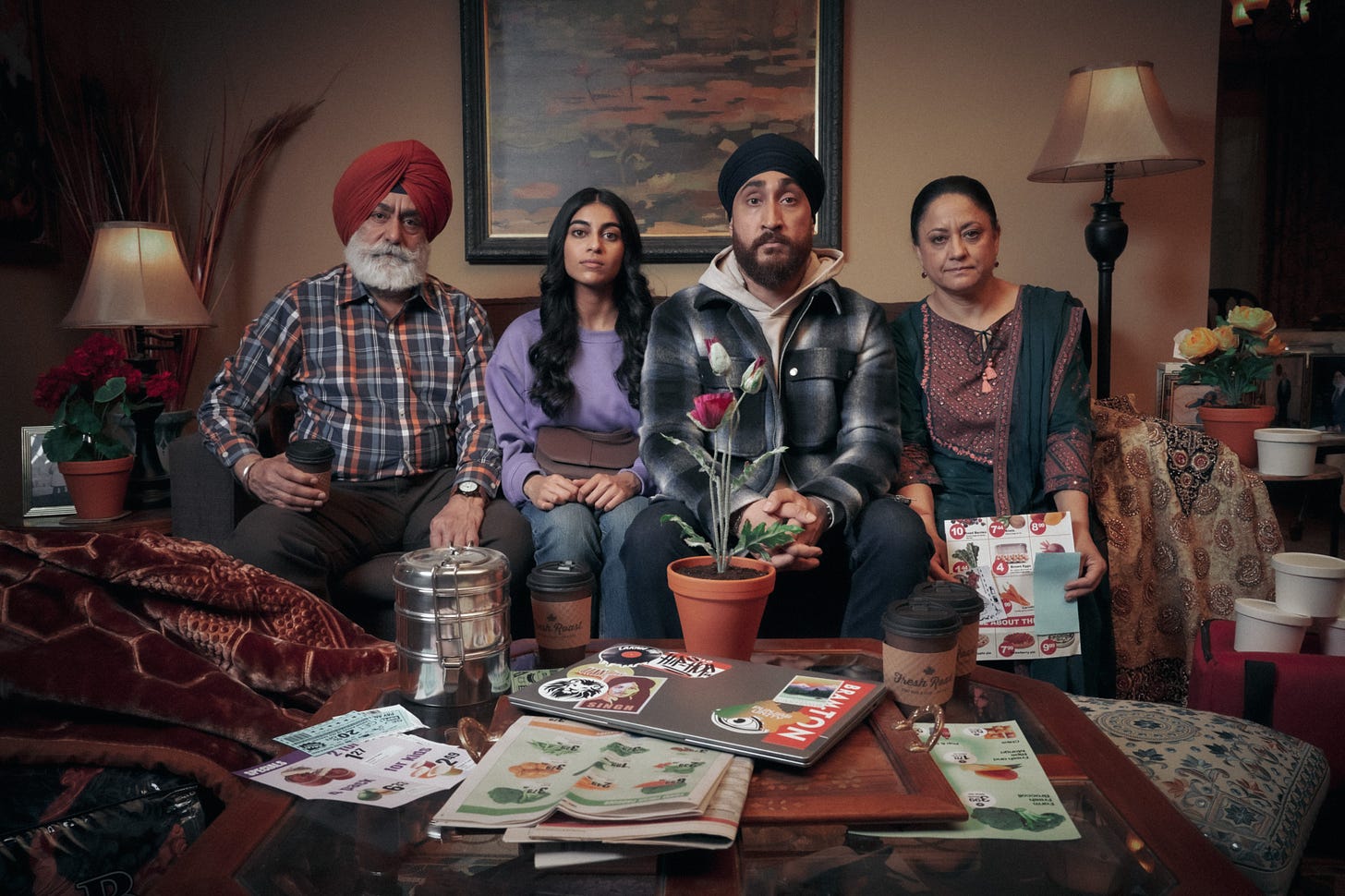Jasmeet Raina's "Late Bloomer": A personal exploration of Sikh presence in mainstream media
Join me on a heartfelt journey of discovering authenticity and belonging in Jasmeet Raina's "Late Bloomer," a groundbreaking celebration of Sikh culture and community.
Late Bloomer via Crave Original
As a Sikh journalist navigating the mainstream media landscape, finding genuine representation has felt like looking for a needle in a haystack.
But then came "Late Bloomer" a TV series on Crave, that follows Jasmeet Singh Raina aka Jus Reign as he tries to balance his ambitions for success with his commitment to his family, community, and culture.
It provided a sense of hope amidst the misrepresentation of Sikhs in the film industry. I would like to share my perspective on why this show will resonate with many of our fellow Canadian Sikhs.
From the first episode, I felt an instant connection with Jasmeet's portrayal of Punjabi culture. It was like catching a glimpse of my family dynamics on screen—the laughter, the chaos, and the unconditional love. Each scene resonated with me deeply, reminding me of the warmth and vibrancy of my upbringing.
What attracted me most was not only the familiar sights and sounds but also the deep sense of belonging that resonated throughout every episode. In a world where Sikh voices are often marginalized or silenced, "Late Bloomer" created a space where our stories were celebrated, our traditions honored, and our voices heard.
The final episode left me experiencing a whirlwind of emotions. As Jasmeet said goodbye to the season, I found myself reflecting on the profound impact the show had on me. It was not just about entertainment; it was about validating our experiences, struggles, and triumphs.
At that moment, I realized that "Late Bloomer" wasn't just a TV show; it was a lifeline – a reminder that no matter where life takes me, I will always have my roots to ground me. It was a celebration of resilience, community, and home.
As a Sikh journalist, I want to express my gratitude to Jasmeet Raina for representing us, amplifying our stories, and reminding us that our voices matter.
It depicts a story common to many brown households, illustrating both vulnerability and the strong sense of community we have. It also highlights the societal pressure people experience when they believe others' opinions hold more weight than their own.
As I look back on this journey, I am filled with hope for the future – a future where Sikh representation is not just a rarity but a norm, where our stories are not just told but celebrated, where "Late Bloomer" is just the beginning of a new era of inclusion and diversity in media.
Until then, I will cherish the memories of "Late Bloomer"—a show that made me laugh, encouraged me to reflect, and helped me feel understood. I will continue sharing our stories, one word at a time, knowing that there is power in our voices and strength in our unity.
I'm excited to dive into the second season! I have high expectations and hope it brings as much enjoyment and insight as the first season did. Here's to another round of captivating storytelling and engaging characters in "Late Bloomer"!
What are your thoughts on the show and its representation of Sikh culture?
I'd love to hear your opinions and experiences. Share them in the comments below.


